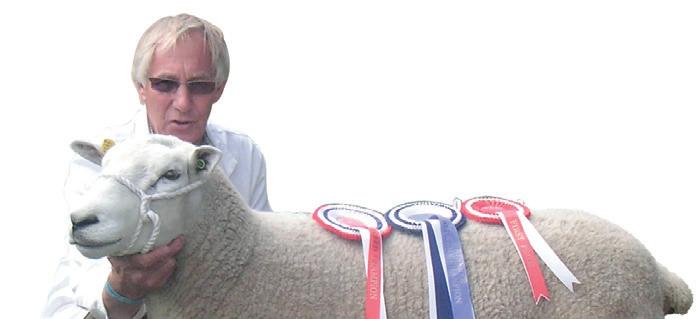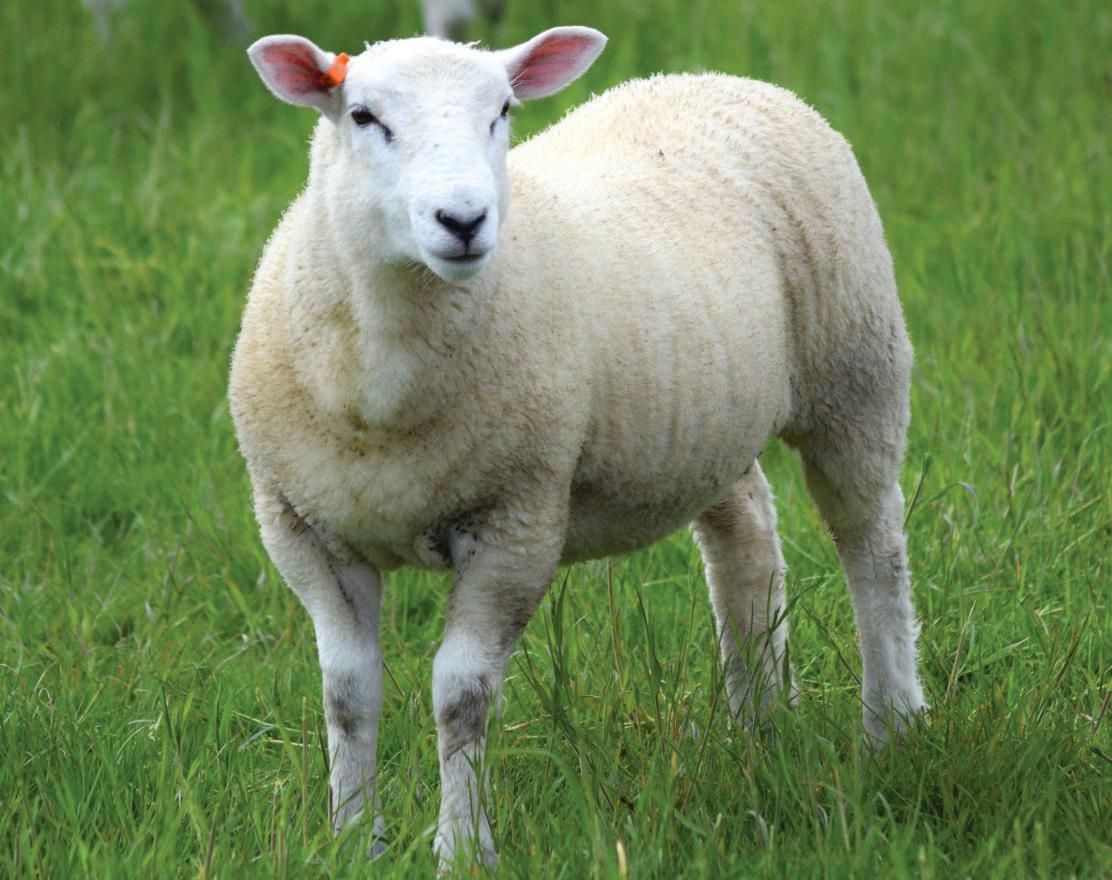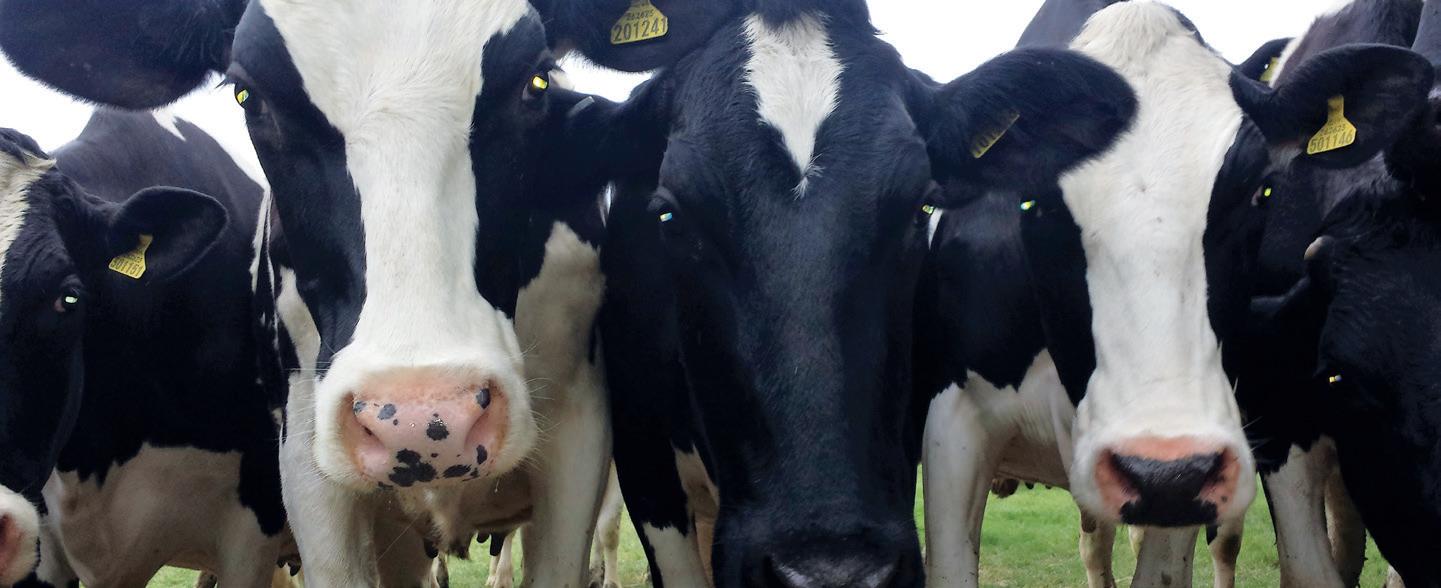
10 minute read
ALAN WEST

UNPREDICTABLE WEATHER
Geographers always say that the British Isles have lots of weather but no climate, a statement that seems to be increasingly evident. The term climate implies a degree of predictability that we certainly do not appear to have.
Before moving to Kent some 40 years ago I had become rather used to a degree of predictability and consistency in the patterns of the weather, particularly as I relocated from north Wales. In north Wales, if it’s raining and it’s warm you know that it is summer; if it’s raining or snowing and it’s cold it’s winter. That’s slightly unfair, Wales can have some lovely weather but you know that you are going to get plenty of rain.
Being accustomed to a degree of predictability was almost certainly enhanced by the four years spent in the Middle East, where, when you get out of bed in the morning you know precisely what the day’s weather is going to be. In the summer it starts hot and gets hotter; in the winter it starts cold, frosty even, and gets hot; and if it starts warm and gets hotter it is either spring or autumn. The couple of rainy days each year are easily ignored as they tend to be more of a hindrance, messing up irrigation schedules, than a help.
The fi rst winter I was in Kent people frequently said: “Oh, this is not a normal winter.” The problem was they said the same the next winter and the one after. With the bulk of our country’s weather coming from the south west, Kent tends to get what is left over, except of course when it comes from the east and then Kent gets the lot; the past few years have simply served to reinforce this view.
Back in early May, grass supplies were tight and getting tighter. Producers were pleased to see a bit of rain, but weren’t quite sure where things were going weather wise; nights were still unseasonably cold and there was always the prospect of things drying up again. As it turned out, the rain kept coming and once things started to warm up the grass was playing catch up. Typically, after a period of stress, catch up for the grass meant growing fast enough and suffi ciently to put up a fl ower spike, determined to set seed before things changed for the worse once again. In a matter of weeks we moved from a developing famine to a feast, with grass getting away from the sheep. I have to think back a long way before I can recall a year in which I have had so much grass in front of the sheep at the end of May.
This situation does, though, present a bit of a dilemma, giving us the prospect of abundant grass supplies but falling quality as it progresses towards fl owering and seeding: what to do for the best. In the past I would have topped off the paddock to
ALAN WEST
Sheep farmer
remove emerging seed heads before the sheep went in, but with warmer and sunnier weather once again there is always the looming prospect of things drying out again.
Poor quality grass is better than no grass at all, even if it is only belly fi ll. However, with a combination of fairly rapid rotation around the paddocks and topping off after the sheep have moved on, I seem, more by luck than anything else, to be keeping a decent wedge of reasonably good quality grass in front of the sheep, generally managing to top off just as grass is coming up to fl owering. It is nice this season to be able to use paddocks properly, the fi rst time for several years. An additional advantage of moving sheep around the paddocks fairly quickly is that they are not hitting them too hard. Moving them on with a decent grass cover still in place is certainly helping to keep the moisture where it should be and traps a bit of dew, as well as prompting quicker regrowth. Leaving plenty above ground certainly helps what is going on below ground and leaves the roots in a much better condition than they would be with tighter grazing.
We were lucky that the rain came at just the right time. Had we gone into a drought situation so early in the year, a lot of sheep keepers really would have been facing signifi cant problems, particularly because after the 2020 season forage stocks are very low, and for many non-existent; the summer is only just starting.
So, what can we do to help alleviate problems in future drought situations? I have already mentioned careful grazing management to conserve available moisture, but this is often easier said than done. Faced with dwindling grass supplies it is very tempting to hit grazing harder than we know is wise. Longer term solutions are available and, based upon the experiences of the recent hot and dry summers, worth exploring. One option is to make use of more drought tolerant species and varieties either in reseeds or for over-sowing; 20 years ago plant breeders would not have seriously considered developing drought tolerant varieties for the UK market; now they certainly are. Mixed species swards are another option where there is considerable and growing interest. Inclusion within a mix of some deeper-rooted species (don’t just think grass) and varieties enables the sward to draw moisture from a wider soil profi le. Single species swards will have all of their roots at about the same level, all competing for the same limited soil moisture, which may be rapidly depleted, even if there is still moisture available at depth.
Another alternative which also has wider benefi ts in terms of soil health and carbon capture capacity is to build soil organic matter levels. Sadly, organic

matter has been harvested from many soils over the past 50 or 60 years without any real thought given to replacing it. Substituting fertiliser to fulfi l the function largely occupied by organic matter has been rather too easy. This is an approach that sadly ignores the other functions of organic matter, one of which is retaining moisture in the soil. With 1% organic matter, the soil will hold about an inch (25mm) of water. Simply increasing soil organic matter by 2% (although not quite as easy as it sounds) would increase the soil’s capacity to trap and hold moisture by about the same amount of rain that most of the South East had in May; consider what that did for grass growth.
Sheep producers are in a position to do something to increase the resilience to adverse weather patterns, particularly dryer summers, but there are also ways, worthy of exploration, in which we can extend grazing seasons at both ends of the year. All of which can help to reduce costs of production, an important consideration even though sheep meat prices have remained fairly fi rm.
Exports of sheep meat did increase by just over 10% in March, but the overall position for the fi rst quarter of the year is that they were down by 22%, EU exports in particular falling by 26%. The impact of this on prices has been partially off set by a signifi cant drop in imports, which have declined by some 15% overall, including a 46% drop in imports from Australia; watch this space. Trade deals, concluded with rather indecent haste, without any real consultation, could have a signifi cant impact. New Zealand imports dropped by 10% and Irish imports by 71%, year on year, all of which have helped to sustain prices.
Firm prices do have the potential to translate into enhanced producer confi dence when it comes to breeding stock sales this autumn. Good quality, productive breeding stock is important for the future of the industry, and good stock is not cheap stock - hence the old adage “there are good rams and there are cheap rams, but there is no such thing as good cheap rams”.
For a productive fl ock it is worth investing in good quality youngstock. The same principle may also be applied to young, new entrants to the sheep sector. There are some good (some very good), young shepherds out there and they need investment; investment in terms of funding for education and training that is largely the role of government, sadly a role that it has failed miserably to fulfi ll for decades. They also need investment in time and this falls largely to the sheep industry, we all need to be encouraging good new entrants; we need them, more than many appreciate. But along with giving them appropriate experience, we also need to foster a meaningful, open-minded and questioning approach to the industry. They need to be prepared for the 21st century not confi ned by dogma and attitudes from the 20th century.

PREPARE FOR TAKE-OFF
The usual post-calving and post-lambing lull has been much appreciated, giving us time to take a much needed breath before the holiday season hits us. We fi nd much of our focus is on farmer meetings such as the Flock Health Club, running courses such as Managing Medicines and, of course, dairy, beef and sheep health reviews.
We had a great on-farm Flock Health Club meeting with a demonstration and discussion around the subject of block grazing mixed species leys with both sheep and cattle. It was great to understand how one of our farmers has been adopting new grazing strategies for his downland farm. He hopes that the drought resistant sward will improve lamb performance through the usual sparse summer months and that the diff ering root systems will contribute to improved soil health alongside the trampling eff ect of the cattle improving levels of organic matter.
Lamb growth will be interesting to track, as grazing higher covers and leaving higher residuals, combined with the presence of bioactive chicory in the sward, should help reduce worm burdens, improve immunity and reduce the need for worming.
With a large proportion of our dairy herds being autumn block and seasonal calvers, we always spend May and June reviewing the last year’s performance and planning ahead for the following season. Many herds have already started drying off early calvers, so it is important for us to review the transition period (from dry to milking) success from last year. We review the incidence of transition-related disorders such as metritis, early lactation mastitis, retained foetal membranes, ketosis, displaced abomasa, fatty liver, disorders of fertility and early lactation death. A health review is a very useful ‘feedback’ measure of transition success or failure, but in tight block calving herds it is often too late to implement change in the same season.
Managing a dairy cow can be compared to fl ying an aircraft. It is the take-off and landing that is trickiest to navigate but once successfully airborne it should be relatively incident free. Now is a great opportunity for us to discuss with our farmers how they can plan ahead and use ‘feed forward’ measures to ensure that transition can be as successful as possible. Ensuring cows are dried off at appropriate body condition scores is essential, and monitoring things such as rumen fi ll scores (as a proxy for feed intakes) of close-up dry cows can be a useful measure.
Ensuring that an optimum dietary strategy for energy and mineral balance appropriate to the system being adopted is key. Provision of adequate feed and water space should not be overlooked. Most farms will have a pinch point where stocking rates in calving paddocks peak and it is vital that the system can cope at the point of maximum stress. Maximising dry matter intakes of a restricted energy diet close to calving is of utmost importance to avoid excessive condition loss either before or after calving.
Group management is also important and this will often be governed by the dietary strategy, with some farms opting for a single group, single ration, six-week dry period and others adopting a more traditional fi ve week far-off group and a three week near-to-calving group. Any movement of cows between groups will disrupt the hierarchy, create social stress and suppress feed intakes, and as such, the frequency of group changes should be reduced as far as is practical.
There are often compromises that have to be made due to factors such as the availability of labour and/or infrastructure, but sometimes changes that are relatively easy to make can make a big diff erence to transition and set cows up for a successful lactation.
NICK PILE
BVM&S MRCVS, director of Cliff e Veterinary Group
T: 01273 473232 E: nick@cliff evets.co.uk










